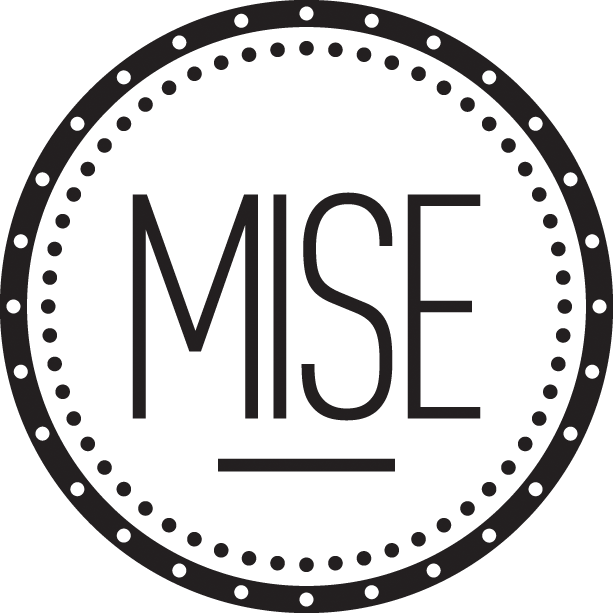(Left) Galdones, in a shot by Eric Kleinberg. (Right) Matty Matheson, owner of Parts & Labour in Toronto, breaks down crab for a Northern Chefs Alliance Dinner hosted by Jm Curley in Boston, MA.
Watching Huge Galdones at work is a reminder that one can be stealthy and outgoing at once. His subjects open up to him almost immediately, and just as quickly forget that he's there: a difficult and extremely important skill, especially when you're another body in a packed restaurant kitchen. You've got to be everywhere and nowhere to do this job well, and Galdones makes it look like the best gig you could ever have. Which it probably is.
A Montrealer who calls Chicago home, Galdones is not only the lens behind big-ticket events like Cochon 555 and the Food & Wine Classic, but he possesses a keen sense of intimacy; whether you're talking about a plate of caviar (see below) or capturing inspiration on a chef's face, his ability to to see straight into the heart of a moment is staggering.
"Huge is a fuckin' G," says friend and collaborator Matthew Jennings, chef of the upcoming Townsman in Boston. "He's a great artist and an even better human being. His eye is extraordinary. The quality and depth of his work blows me away. And he's good people. That's a distinctly radical package."
Distinctly radical, indeed.
What about food photography appealed to you in the beginning? Is it the same thing that keeps you motivated now?
I got sucked into the culinary world in college. Between hanging out with friends who loved food as much as I did, working in a kitchen part-time, purchasing my first SLR (and being bitten by the photography bug), it seemed like it was meant to be. I’m driven by the culinary underbelly. Partly because I really miss working in a kitchen, I feel most at home shooting the back-of-house and behind-the-scenes action. I don’t think I’ll ever get tired of making images and telling stories of how the food gets to your plate.
Greg Laketek (owner of West Loop Salumi, Chicago, IL) checks the maturation of his salumi.
Is there a shoot or experience that sticks out in your mind as particularly meaningful?
I’ve been lucky enough to work with some of the world’s most renowned chefs and document some epic food-driven events, but one of the most impactful experiences came early on. I’m eternally grateful to the whole Joe Beef team who helped me foster my love for all things food and photography. Between peeling asparagus and breaking down lobsters, I was able to grab my camera from off my station and photograph the inner workings of that kitchen. Without this experience, I don’t think I’d be doing what I do today.
What have you learned most from your industry subjects?
That time is valuable. I think a big reason why my clients call me back is because my workflow/photographic approach really takes their time into consideration. Very seldom will I take hours to shoot just one dish. I’m methodical, yet efficient. More often that not, the chefs literally have more important things to take care of—like prep for dinner service.
Pensive chefs Grant Achatz and Ferran Adria being interviewed by a journalist (Balena, Chicago, IL).
What's the biggest misconception people often have about your job?
A lot of people think that I get to eat everything that I shoot—clearly not the case. I do like working with actual edible dishes in that it retains the integrity of the food and doesn’t necessarily mislead the viewer, but by the time I’m done capturing what I need, the food is no longer at its prime. In other cases, I’m shooting styled food that may look good but isn’t edible at all.
Caviar course that’s served without utensils. The patrons are meant to lick the plate clean. (EL Ideas, Chicago, IL)
Is there someone's food you just can't photograph enough of?
This is a hard question because I’ve come across so much awesome food. Locally, I love working with Stephanie Izard (Girl & The Goat/Little Goat, Chicago) because her food is so eclectic and unique. I’ve only worked with Matthew Gaudet (West Bridge, Boston) once before but absolutely love his aesthetic and balance.
Executive Chef David Varley (far left) shares a laugh with his FOH staff during their pre-service meeting (RN74, Seattle, WA).
Do you think, on the whole, Instagram's presence in kitchens and dining rooms has a positive or negative effect on the field?
I hate it when people use their iPhone flash when documenting their dining escapades, post blurry images, and take forever to photograph the food. As much as the BOH may dislike so-called Instagram foodies, there’s no denying that this culture drives the conversation, for better or worse. It may take away from the overall dining experience as people forget why they are out in the first place, to eat and enjoy company, but from a hospitality perspective, it can play favorably towards the restaurant since it’s basically free advertising.
Which of your peers do you admire the most?
I’m inspired by so many artists that it’s hard to list them all. Stephen Hamilton, Marcus Nilsson, Penny De Los Santos, Melanie Dunea, and Jennifer May, just to name a few.
















